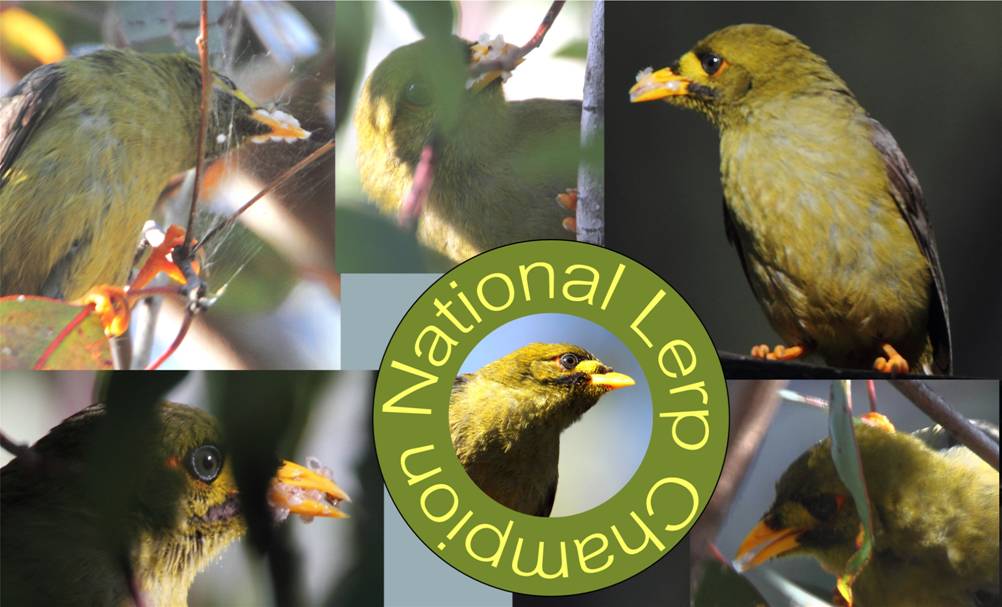No secret that there are lots of bell miners at some spots
down at the coast. These are very found of lerps; in fact, I’d
say no lerps, no bell miners. There is a theory that bell miners are a
cause of eucalypt dieback because they exclude small birds like pardalotes from
areas where the small birds are needed to effectively control parasites.
At Mandeni near Tura Beach permission was given for trapping and destroying
large numbers of bell miners in a dieback experiment. There is a whole
lot more if you look into the activities of ‘BMAD’.
Meanwhile the bell miner itself is pretty good
lerp-eater. Wikipedia even suggests the Bell Miner got its name from its
association with lerps. Well, maybe:
“ The Bell Miner, Manorina
melanophrys, colloquially known as the Bellbird, is a colonial honeyeater
endemic to southeastern Australia. They were given their common name because they
feed almost exclusively on the dome-like coverings of certain psyllid bugs,
referred to as "bell lerps," that feed on eucalyptus
sap from the leaves. The "bell lerps" make these domes from their own
honeydew secretions in order to protect themselves from predators and the
environment. They are also very likely to be named after their bell-like call. “


